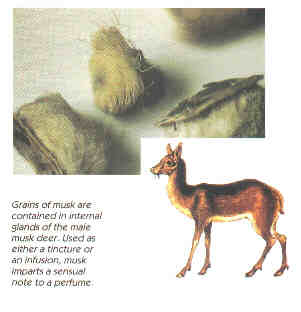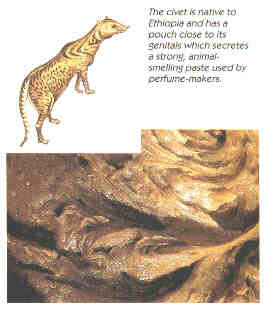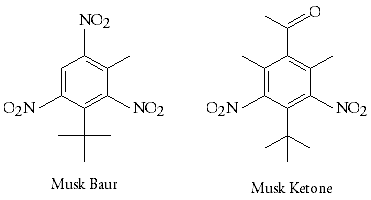 |
 |
|
The Musk Deer |
The Civet Cat |
| Picture taken from http://www.parfumsraffy.com/ingredients.html | |
Musks
The original musk components of perfumes were extracted from animal sources. The 2 major ones are musk and civet, which were extracted from the anal glands of the musk deer and the civet cat respectively. In both cases, the extracts have strong animalic character arising from compounds such as indole and skatole (2-methylindole).
 |
 |
|
The Musk Deer |
The Civet Cat |
| Picture taken from http://www.parfumsraffy.com/ingredients.html | |
Under this animalic and not entirely pleasant character however, lay a rich, sweet character. Muscone, Civetone are the most important components of musk and civet respectively. Ambrettolide is a plant product, occurring in the seeds of the ambrette plant.

These natural musks are very expensive and their macrocyclic structures presented synthetic challenges which were not conquered. However, in 1888, Baur discovered a series of nitromusks, while working on explosives containing counpounds like trinitrotoluene. Musk Ketone, shown in the diagrams below has the closest odour to that of natural musk.

These nitromusks, however, has a number of disadvantages, like the hazardous preparation process and phototoxic products. In the 1950s , a new class of musks, the polycyclic musks were discovered. These materials have indane, tetralin or isochroman strustures, heavily substituted by methyl or other small alkyl groups. Typical members of these groups are shown below.
